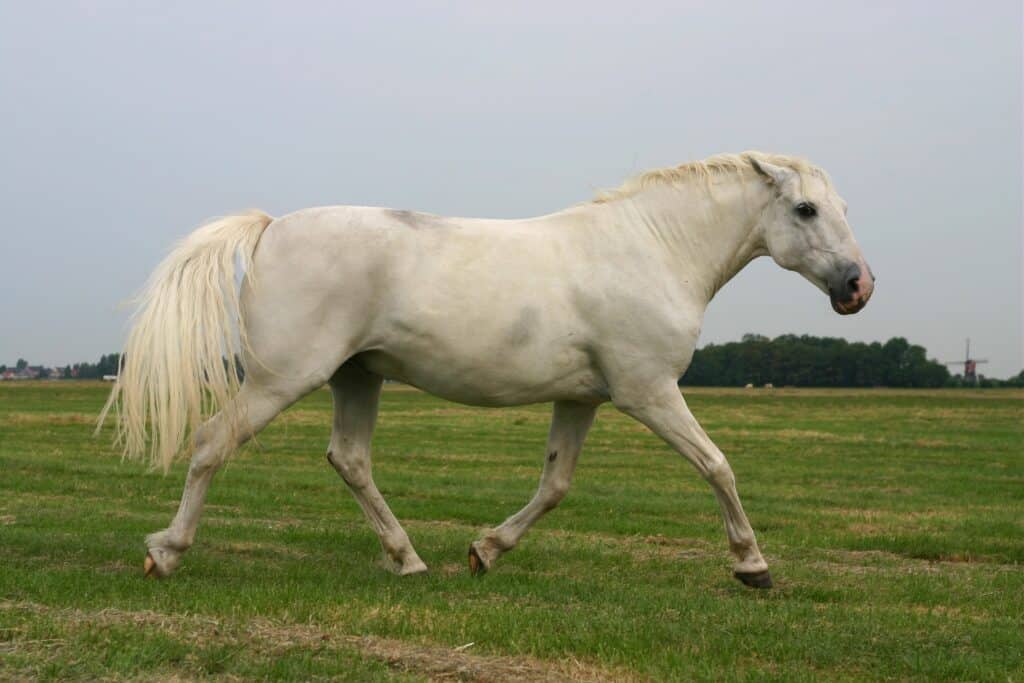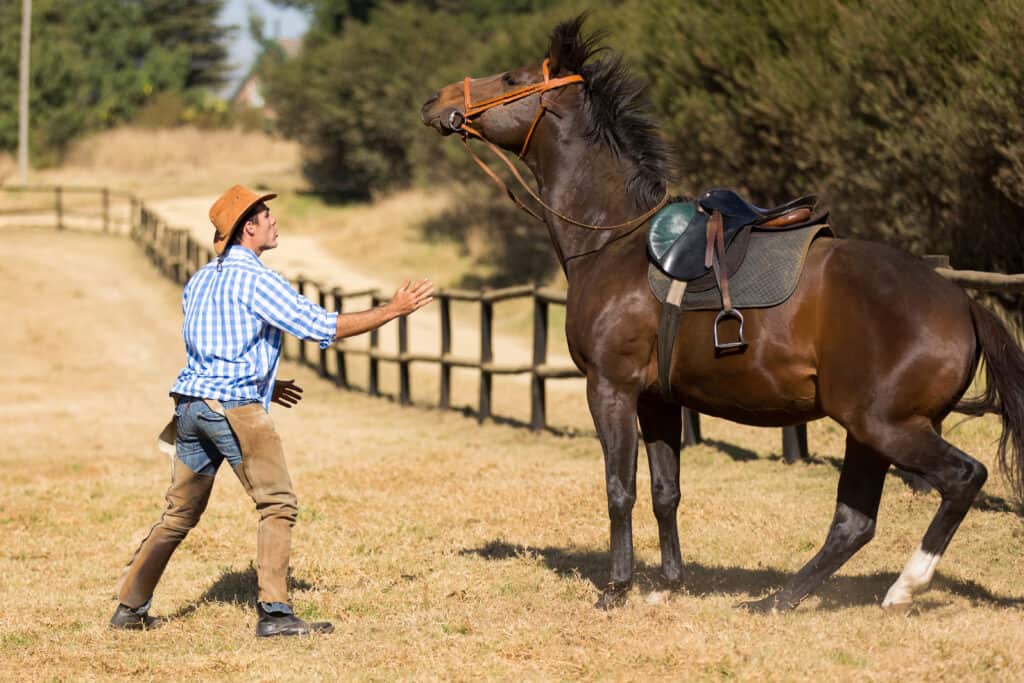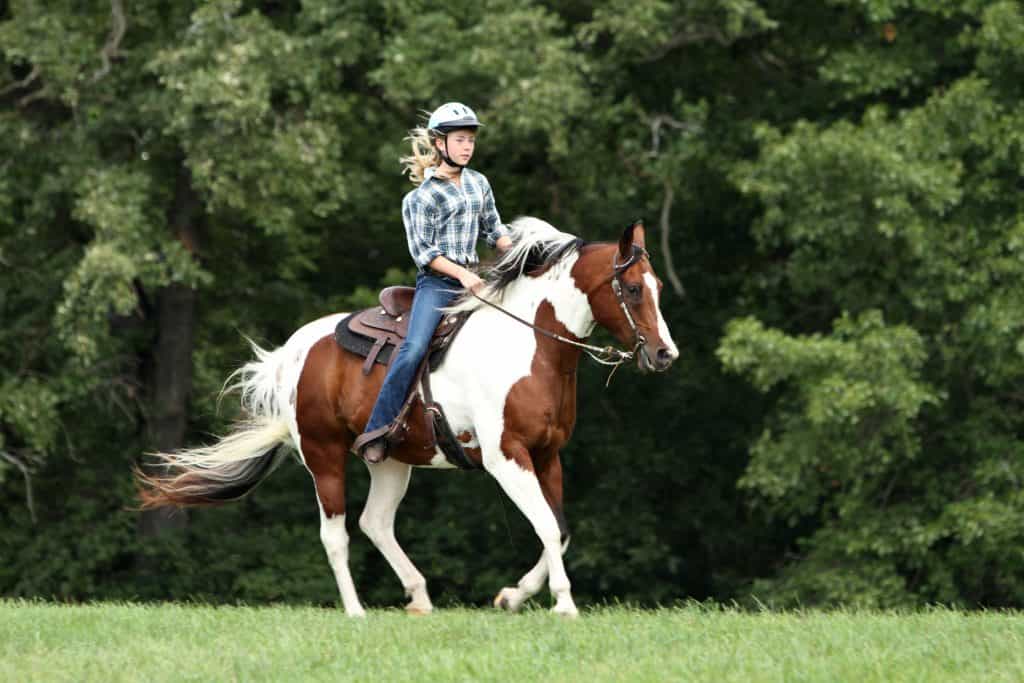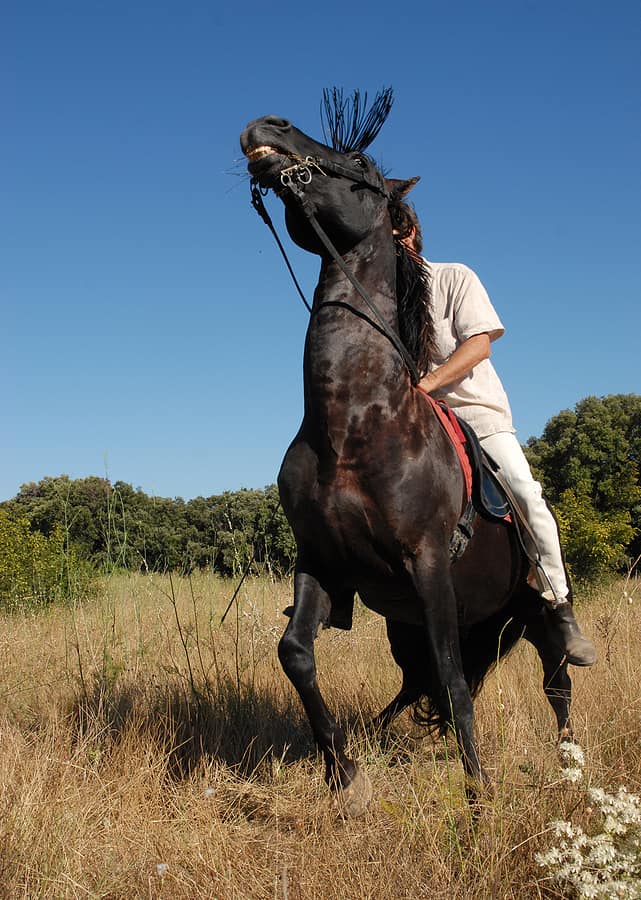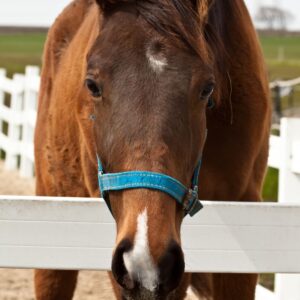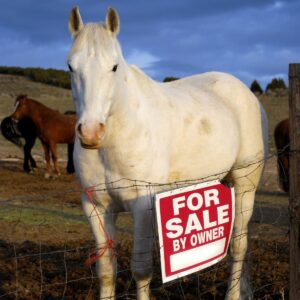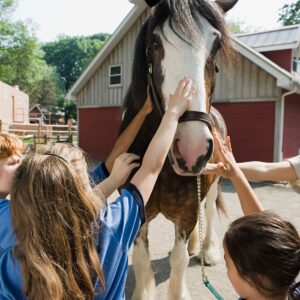Horses are hardwired as fight or flight prey animals. It is how they have survived for centuries. They have powerful legs for fighting, but they would rather use them for flight. Does your horse spook easily at what seems like nothing? In this article, we discuss why horses spook easily, plus tips to help.
Monster or Deer?
Recently I was lunging my mare, something we do regularly. Suddenly she jumped, ran past me, swirled around, stops and stares into the timber next to the arena. I couldn’t see anything to cause upset. After some coaxing, I was able to walk her to the fence. Her head was held high, and she was blowing. I kept her there until she relaxed. I never did find out what was the matter. Maybe a deer? This is just one example of a horse spooking. Anyone who has been around horses has stories of horses spooking, sometimes for no reason at all.
Quick Reactions to Survive
Horses have large ears, nostrils, and eyes (the largest of any land mammal). They use their senses to be aware of their surroundings constantly. They can react far more quickly than we do when they feel danger.
Your horse may see that white bear, shaped like a bag, long before you do. So, he jumps sideways to get away from it. More than likely, he doesn’t think there is a bear in that bag. Instead, he is reacting instinctively and reflexively. For thousands of years, the horses that acted before they thought were the ones that survived real predators. Most horses will think about it for a few steps, stop and reevaluate the threat.
How Horses See
Horses have large eyes on the sides of their heads. It allows them to see 360 degrees around them, with a small blind spot directly in front of them. Although this is helpful, their eyes are weak compared to humans when it comes to focusing.
You can try this to get a vague idea of how a horse sees in front. Make two circles with the thumb and first finger of each hand. Cross your hands and bring the circles up to your eyes. See the blind spot? You have to move your head and use one eye to see what is in the blind spot. That is what horses do to see up close. After about two yards, a horse can see in front.
Use Different Stimuli
Horses are smart, and it shows by how fast they react, stop, and reevaluate a situation. This is helpful to us when we want to desensitize them to different stimuli.
If they are subject to the same stimulus repeatedly, they will learn to accept that it is harmless. The thing to remember is that getting used to the tarp won’t get them used to the neighbor’s hogs. We have to subject them to all kinds of stimuli.
Scary Tarps and Flags
Tarps are an excellent way to desensitize horses to some situations. However, horses are thought to be mostly color blind. What we see as a blue tarp laying on green grass, they see as a black hole. A flag on a stick is another useful tool. Flags can represent plastic bags flying thru the air, banners attached to arena walls, etc.
Tips for Desensitizing From the Ground
The goal of desensitizing is to get the horse thinking, not reacting. We need to start this on the ground. There are three main things you need to remember:
- You need to breathe.
If you are tense, your horse will feel that. We want our horses to trust us as the leader that will keep them safe. If the leader is afraid, there really must be a reason to be scared. Humming or singing will help both of you relax.
- We want to give the horse something else to think about.
Instead of focusing entirely on the scary object, you want to keep the horse's mind on something else. We do this by keeping his feet moving.
Here is an example using a tarp:
- Leading the horse, you approach a tarp laying on the ground, the horse spooks.
- Start asking the horse to move in circles around you or walk around in zigzags. He will start thinking about what he is being asked to do instead of the boogieman.
- As soon as he shows the slightest sign of relaxation, stop moving with the horse facing the tarp, and pat him.
- As soon as he starts to react, start moving his feet again to get him thinking again. Each time you stop, try to do it a little bit closer to the tarp.
- When the horse approaches the tarp, let him smell it then ask him to step on it.
- If he spooks, repeat the above steps.
Here is an example using a flag on a stick:
- While holding your horse on a loose lead rope, start shaking the flag, putting on the pressure. Start with light pressure. Sometimes just keeping it up in the air will worry a horse. Be prepared to hold on if he bolts.
- Keep the pressure on until he shows the slightest sign of relaxation. Examples are lowering of the head, a softening of the eye, licking lips, etc.
- As soon as he demonstrates the slightest relaxation, stop with the flag, and pat him.
- Then do it again, putting on more pressure each time.
- The next thing to remember is desensitizing does not come immediately. Your horse may act good one day, and the next, it will seem like you didn’t get anything accomplished. But don’t despair! Keep up the exercises; things will get better. If you try to rush it, things will go backward instead of forwards.
Tips for Desensitizing While Riding
Riding a spooking horse can be a challenge. If we teach our horses to think using ground exercises, like the ones above, they will learn to keep thinking while being ridden. Here are the steps I use to approach an object my horse is spooking from while I am riding.
- From a distance, I let her stop and look at the object. As soon as she relaxes, I ask for as many steps forward she will give me while staying relaxed.
- If she tenses up, we start walking, changing directions back and forth. I want her to think, not react. Then we repeat step one. This time I want to be closer to the object if possible.
Final Thoughts
A spooking horse is a throwback to instincts developed over thousands of years for survival. With the right training and plenty of patience, a horse can learn how to think instead of react. The best way to get them to use their thinking side of the brain is to get them to move their feet in different directions. Remember, don’t get angry or disappointed, be patient. The horse will feed off you being upset and be upset also.
Horse Courses by Elaine Heney
- Listening to the Horse - The Documentary by Elaine Heney & Grey Pony Films
- Shoulder In & Out Training for better balance, bend & topline development with your horse
- Over 110+ Polework Exercises & Challenges to Download
- Dancing at Liberty & Creating Connection with Your Horse (11 lessons) - Grey Pony Films

